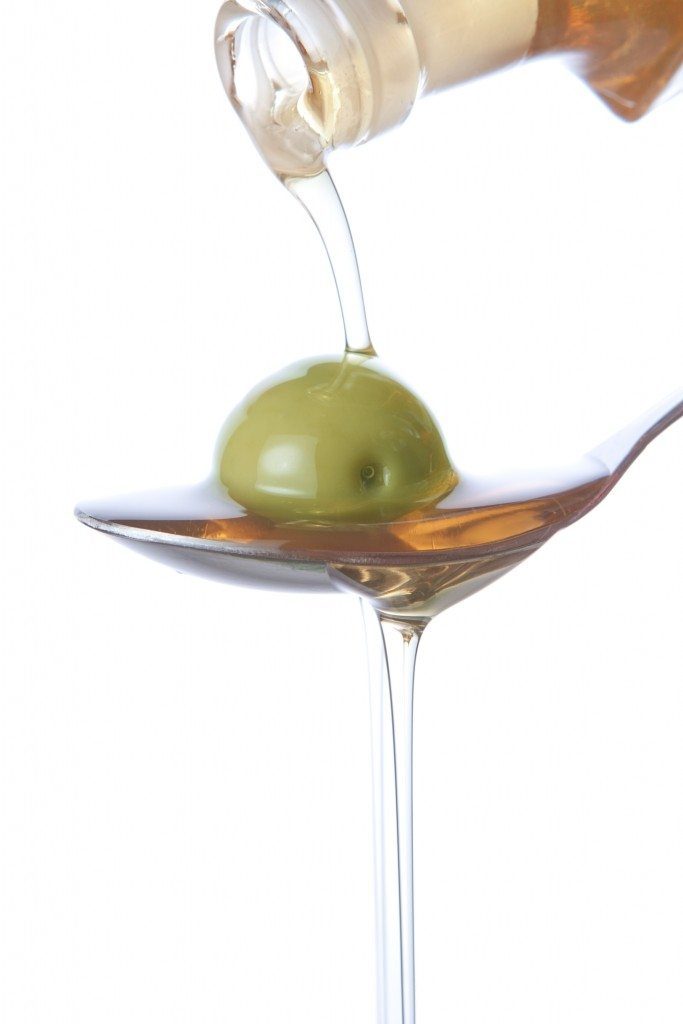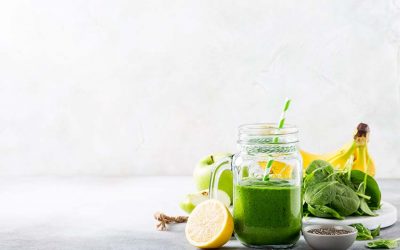The body can synthesise many of the fats it needs for normal metabolism and good health. However, some essential components must be found from our diet, including the omega-3 (ω-3 or n-3) and omega-6 (ω-6 or n-6) polyunsaturated fatty acids.
Omega-3
Omega-3 fatty acids are unsaturated fatty acids and the most important nutritionally are: a-lipopenic acid, eicosapentaenoic acid (EPA) and docosahexaenoic acid (DHA).
Omega-3 fatty acids are the immediate precursor of many eicosanoids, which control a number of important pathways highly relevant to ageing, including inflammation, immune function, clotting and cancer growth. There is substantial evidence that a diet high in EPA and DHA can reduce the risk of heart disease and stroke, possibly by lowering blood pressure, improving blood triglyceride levels, stimulating local circulation and preventing clotting.
These fats may also have beneficial effects on other problems associated with ageing, including varicose veins, arthritis, cognitive decline and depression.
Foods rich in ω-3 include:
- cold-water, oily fish, such as salmon, herring, mackerel, anchovies, sardines and, to a lesser extent, tuna. (Farmed fish is higher in ω-6 and lower in ω-3 than fish from the sea).
- meat from grass-eating animals, such as lamb or kangaroo. Organic, grass-fed beef has a ω-6 to ω-3 fat ratio of 2:1, compared to 4:1 or higher for grain-fed beef.
- dairy products from grass-fed cows.
- organic eggs (from chickens fed a diet of greens and insects, not battery hens fed on grain) or eggs from chickens fed flaxseeds (to fortify the egg with ω-3s).
- a vegetarian diet can obtain significant amounts of ω-3 fat from flaxseed (linseed), purslane, kiwifruit, lignon berries, black raspberries and walnuts.
It is recommended to eat a gram of EPA and DHA each day from animal fats, or 2-3g per day of alpha-linolenic acid from seeds. This is equivalent to an oily fish meal 2 or 3 times a week.
Omega 6 Fatty Acids
Omega-6 fatty acids are also a precursor for the synthesis of many regulatory eicosanoids. However, when in excess, ω-6 fats can lead to increased production of factors that favour inflammation, clotting and tissue injury. Linoleic acid is the most common dietary ω-6 fat and is found in oils, eggs, cereals, grains, nuts and seeds. Evening primrose oil contains a high content of gamma-linolenic acid, another type of ω-6 fatty acid.
While an essential component of healthy function, most modern diets typically have too much ω-6 relative to ω-3 fat, often more than a ratio of 10:1. Any imbalance can lead to a number of adverse consequences, including depression, heart attacks, stroke, arthritis, osteoporosis, inflammation and cancer. We can tip the balance in our favour and reduce these health risks by increasing our intake of ω-3s.
Mono-unsaturated Fats
Mono-unsaturated fats (MUFAs) are liquid at room temperature, but solid when refrigerated. They are also more resistant to going rancid than polyunsaturated fatty acids. The most common dietary MUFA is oleic acid, a ω-9 fatty acid found in vegetable and seed oils, nuts, avocado and some meats. Most of these possibly beneficial compounds are destroyed by prolonged, high-temperature cooking or frying, so consider drizzling on your salad instead!
A number of studies have suggested that a high intake of MUFAs, typical in most Mediterranean diets, can lower blood pressure, possibly by changing the composition of membrane lipids and proteins, or improving vascular function. Foods containing monounsaturated fats also lower LDL cholesterol.
Saturated (Fat) Bombing
All natural products have a balance of saturated and unsaturated fats. Foods with a higher proportion of saturated fat include butter, coconut, nuts, dairy products (especially cream and cheese), chocolate, meat and eggs.
Increased intake of saturated fat from our diet contributes to heart disease, more because it raises bad (LDL) cholesterol than as a result of the dietary cholesterol itself. We should aim to reduce our intake of saturated fat to less than 7% of our total calories by limiting our intake of dairy products, including whole milk, butter, cheese and ice cream. The meat of grass-fed animals and birds also contains much lower levels of saturated fat than conventional, grain-fed animals.
Trans Fats
Most trans fats were deliberately created during the processing of vegetable oils (by hydrogenation) to make them solid at room temperature, to melt when baking (or eating) and more resistant to going off than animal fats like butter. Prolonged deep frying can also generate trans fats, which are transferred to the food.
Unlike other unsaturated fats, trans fats are toxic to a range of important systems, contributing to heart disease, stroke, diabetes, obesity, insulin resistance, prostate cancer and infertility. In fact, trans fats increase the risk of heart disease more than any other component in our diet. Even a small intake is sufficient to start increasing our risk of heart disease. There appears to be no safe limit for trans fats.
Cholesterol
Cholesterol is a lipid found in the membranes of every human cell, where it functions to keep our cell membranes flexible. It also has an important role in the function of bile, which is important for the digestion and absorption of fat, as well as fat-soluble vitamins such as Vitamins A, D, E and K. Cholesterol is also used in the body to synthesise Vitamin D, as well as a number of hormones important to the ageing process, such as cortisol, estrogens and testosterone.
Every day the body makes about 1 gram of cholesterol and takes in another 20-30% from food. Any food that contains animal fat also contains cholesterol, especially egg yolk, beef, poultry and prawns.
The body contains a number of different forms of cholesterol. The best known are Low Density Lipoprotein (LDL or bad cholesterol) and High Density Lipoprotein (HDL or good cholesterol). LDL cholesterol deposits in the walls of blood vessels, contributing to stiffening and narrowing, and ultimately their ageing. The higher your LDL cholesterol levels, the higher your risk of heart attack, stroke and other diseases of the blood vessels. On the plus side, for every one mmol/L that you increase or decrease your LDL cholesterol level, your risk of death from cardiovascular disease changes by 20%.
Another way to deal with the LDL problem is to offset it with HDL. HDL particles remove bad cholesterol from the walls of blood vessels and transport it back to the liver for excretion or safer storage sites (reverse cholesterol transport). People with high levels of HDL cholesterol have a lower risk of heart disease and stroke.
Why Supplement with Omega 3s?
Both n-3 and n-6 fatty acids are essential, ie. we must consume them in our diet. n-3 and n-6 compete for the same metabolic enzymes, so the n-6:n-3 ratio significantly influences the ratio of the ensuing eicosanoids (hormones), (eg. prostaglandins, leukotrienes, thromboxanes, etc) and alters the body’s metabolic function. The latest research shows that the most promising health effects of essential fatty acids are achieved through a proper balance between n-6 and n-3. According to experts, the ratio to aim for is roughly 1:4 (ie. 1 part n-6 to 4 parts n-3). Most of us eating a Western diet have this ratio dangerously unbalanced and it is likely to be around 20:1. While reducing our intake of n-6 can help, increasing n-3 is an even better way to go.
The benefits of omega-3s include reducing the risk of heart disease and stroke, while helping reduce symptoms of hypertension, depression, attention deficit hyperactivity disorder (ADHD), joint pain and other rheumatoid problems, as well as certain skin ailments. Some research has even shown that n-3 can boost the immune system and help protect from an array of illnesses including Alzheimer’s disease.
Equally important is the ability of n-3 to reduce the negative impact of excess consumption of n-6. n-6 supports skin health, lowers cholesterol and helps make our blood ‘sticky’ so it can clot, but when omega-6s are not balanced with sufficient amounts of n-3, problems can arise. When blood is too sticky, it promotes clot formation, which can increase the risk of heart attack and stroke. By increasing n-3 in our diet, the risk of heart problems is reduced.
Over-consumption of n-6 fatty acids and the subsequent unhealthy imbalance of n-6 to n-3 is a primary reason behind the need for n-3 supplementation.

Ratios of n-6 to n-3 fatty acids in some common oils:
flax 1:3
canola 2:1
olive 3-13:1
soybean 7:1
corn oil 46:1
peanut no n-3
sunflower no n-3
cottonseed almost no n-3
grapeseed oil almost no n-3
It is recommended to eat a gram of EPA and DHA each day from animal fats, or 2-3g per day of alpha-linolenic acid from seeds. This is equivalent to an oily fish meal 2 or 3 times a week.

















